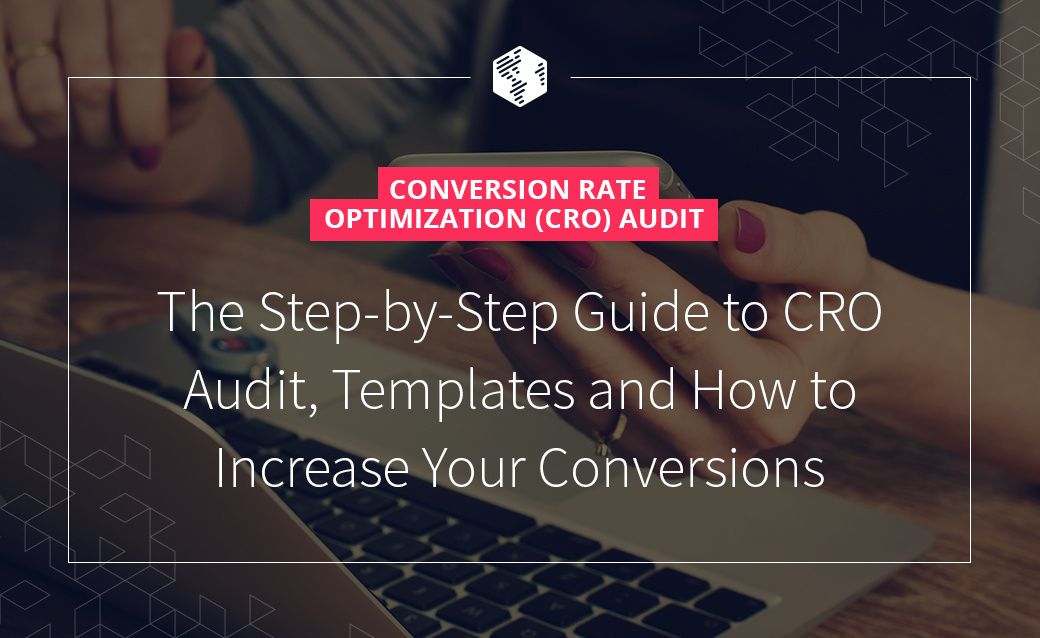Table Of Contents
This complete guide will show you how to conduct a CRO audit step by step.
So treat this information like it’s worth $999 (the average cost of a minimal CRO audit).
Here’s a typical result from a company:
Protalus increased direct sales by 91% in under 6 months through CRO and one-click upsells. This growth is expected to add an additional $97 million to the company’s valuation.
Here’s the truth:
Conversion Rate Optimization (CRO) boils down to:
- Finding the leaks in your website and pages that stops customers from buying
- Fixing these leaks to improve conversions. Period.
A lot of B2B companies generate a lot of traffic to their website. They have all the right marketing strategies and channels.
What these companies are struggling with is retention.
Being able to retain the potential customers that read your posts, watched your video, or listened to your podcast, is more important than investing more money on lead generation.
Conversion Rate Optimization (CRO) isn’t about acquiring new customers to your website — it’s about retaining the existing prospects who land on your page and converting them to customers.
It’s quite easy to lose money if all your company does is invest in customer acquisition. Why? Because acquisition is 4 – 6x more expensive than retention.
You need a CRO audit to be able to understand your users, why they visited your website, what they’re looking for, the areas you need to improve, and so on.
According to the Optimizely Benchmark report, 94% of respondents agree that conversion rate optimization improves their understanding of their customers.”
Most businesses neglect CRO audit after launching their website and steadily getting traffic to it, they feel there’s nothing more to be done. But the real work has just begun.
You need to continually look for the little errors and leaks in your landing pages that could hinder potential customers from buying.
What is CRO?
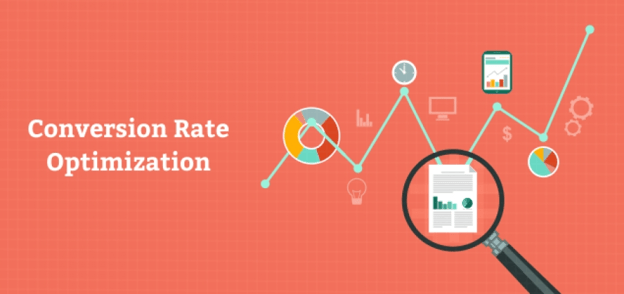
Source: Invesp
In simple terms, CRO is the act of increasing the percentage of your website traffic that successfully converts.
Bear in mind that “conversion” as used in this context can mean different things. It all depends on what business vertical you’re in, and what your campaign is about, these conversions can vary quite a bit.
A conversion can be:
-
Sales
-
Polls and Survey participation
-
Email Signups
-
Webinar Registration
-
New trial user
-
eBook Downloads
-
Social shares, and so on.
Even though sales seem to be the most important metric to track, conversion actions related to email signups and webinar registrations are essential when you’re looking to quantify your lead-generation results.
How Do You Calculate Conversion Rate?
It’s quite easy to calculate and determine the conversion rate of a given page or campaign. For example, if you want to know your average conversion rate on sales generated, follow this simple formula:
Divide your total sales by your total website visits, then multiply the result by 100.
Total Transactions / Total Website Visits X 100
Note: Irrespective of the metric you’re tracking, you can use the formula above to calculate it. All you have to do is replace the total transactions by the total free trial signups, webinar attendees, or any other metric.
When it’s necessary, you may replace the total website visitors with the total page visits for any particular page.
Since a lot of different factors are considered when you’re converting users, beginners to CRO audit could struggle to fit the pieces together. That’s why you must avoid blind optimization and make sure you’re clear about the goal actions you want to improve.
You don’t want to optimize your campaigns and pages for clicks instead of conversions, only to see deliberately increase your ad spend.
What’s a Conversion Audit or CRO Audit?
A CRO audit is the practice of reviewing your website or landing page, looking at it from your customers’ viewpoint, and identifying areas that require improvements that would strengthen your conversion rate.
During this review, you also want to check the right boxes that will guarantee your website is well-optimized for prospects and customers alike.

Typical areas you can focus on are design and layout, search engine optimization (SEO), user experience, social media optimization, checkout process, and copywriting.
Since prospective customers arrive at your website from various channels, their experiences would differ as well. A CRO audit expert or conversion audit professional considers all of these channels and platforms when analyzing your website.
One of the best ways to improve your conversions (signups, sales, downloads, etc.) is to conduct a full audit of your website and traffic sources. This is important if you ‘ever’ want to identify issues that are negatively affecting your conversions.
So if you expected your landing page to convert 30 visitors out of the 100 visitors as customers, why are that not happening? If 16 people purchased your product, for example, why is the remaining 14 persons not doing the same?
Without a CRO audit, you don’t stand a chance of knowing what went wrong. At face value, you may not be able to pinpoint the problem. A little digging and split testing will definitely help.
Why Your Website Needs A CRO Audit
The benefits of CRO audit are enormous. In summary, here are the core benefits it offers to a business:
-
It allows you to lower your customer acquisition costs by generating increased value from the visitors and users you already have on your site.
-
It creates an effective baseline for your optimization process.
-
It allows you to collect insightful data and discover errors on your website.
-
It provides helpful insights into trends by device, region, channel, and season.
-
It allows you to pinpoint prospects’ behavioral characteristics.
-
It helps you to build on replicable ideas for tests.
-
It enables you to detect what’s going well, and what you can improve
-
It saves you time, money, and other resources.
-
It addresses the challenge “You can’t manage what you can’t measure.”
-
It gives you the edge to turn site visits into dollars.
-
It keeps you afloat in a competitive industry.
And so on.
That being said, businesses and marketers make attempt to boost their website conversions — but most of them fail because they try to take shortcuts; they tend to cut-and-paste conversion results and practices from other websites.
Following the “Best practices” isn’t entirely a wrong move. If these practices are relevant to your audience, then go ahead and experiment with them.
But if you’re in the fitness niche, for example, but the ‘best practices’ are from the hospitality (Hotels) niche, it’s worthless trying to play it with.
Don’t gamble for greater conversions, you’ll not be happy in the end.
If you’re a plumber, you can’t successfully fix the water damage without knowing the problem. No matter the tools he uses, the problem would persist because the major problem is yet to be uncovered.
Yes, hiring a conversion rate optimization expert or agency to identify and fix issues that are sabotaging your website conversions can cost thousands of dollars. If you have the budget, then go for it.
But if you want to learn how to do it yourself, this in-depth guide will show you the exact step by step process, along with helpful tutorials and advice to help you achieve your conversion goals.
The Step-by-Step CRO Audit Process
Are you ready to make changes to your website and landing pages that will improve its conversions and put more money in your business’ account?
In this section, you’ll discover how to do a CRO audit even if you’ve never done it before.
The most important thing to keep in mind is that conversion audits are effectively implemented when you have the right data. You don’t do it blindly. You need specific goals when running your pages through an audit.
To stay on track, you need to use the guidelines below to guide you:
Step #1. Answer the Question: “Why Do I Need a CRO?”
You can’t successfully solve a problem on your website if you don’t know what the problem is. It doesn’t matter how much money you’ve invested in your website design or redesign, there’ll always be a room for improvement.
As you’re reading this post, you may think your landing page is perfect, but that couldn’t be further from the truth. Your landing pages aren’t immune to failure.
So the first step in the CRO audit process is to acknowledge that you need to boost your website conversions. Every business needs to use some CRO, especially when you consider the basic definition:
“Conversion Rate Optimization (CRO) is the practice of maximizing the traffic that your pages are already generating and making sure they convert into customers or leads.”
There’s a chance that your website is already generating traffic from Facebook, Instagram, and search engines such as Google and Bing. Imagine if you could convert 50 more organic visitors to your website into paying customers.
So what’s the perfect time to start a CRO experiment and audit?
According to Morgan Brown, you should consider optimizing your pages when you already have a Minimum Viable Product (MVP).
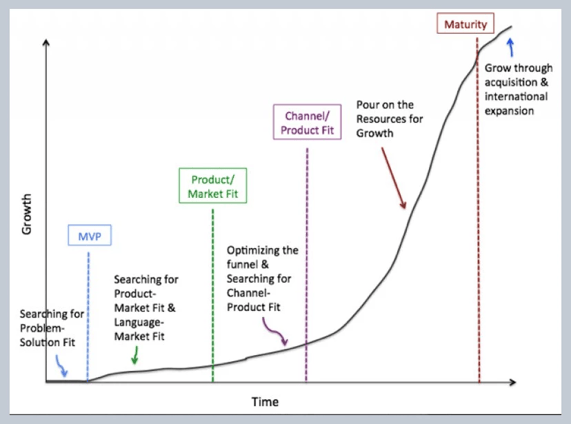
Depending on the nature of your business, that would dramatically increase your revenue. If you have a minimum viable product that sells for $59, an additional 50 customers will be equivalent to $2,950.
Interestingly, you didn’t spend any extra cash to generate these 50 new customers. Many of them are repeat visitors to your page, but for some reason, they don’t feel your product was worth it for them.
But by conducting a CRO audit, you identified and fixed the issue that’s hindered them all these while, and now you have them as customers.
Obviously, your website needs to have existing traffic before you can run it through a CRO audit. It doesn’t make sense trying to optimize for conversions for a brand new website or when you don’t have any tangible traffic.
So once you’ve accepted the fact that you need to run a CRO audit, in a bid to increase your bottom line, it’s time to move on with your goals.
Step #2. Establish Your Business Goals
Your business goals are the map the guides your CRO journey. Without them, you’ll be doomed and wouldn’t even know when you break even.
Conducting a CRO audit without ‘first’ setting clear business goal(s) is akin to sailing the sea without a map.
Once you have well-established goals, it’ll steer you in the right direction with respect to making decisions, prioritizing future campaigns, and so on.
Bear in mind that your business goals can be unique to what you’re expecting. If you want to generate more sales, for example, the metrics to track as KPIs (key performance indicators) will be different compared to generating brand awareness (if that’s your goal).

For example, a good KPI for Lead Generation could be email subscribers, even though this metric may not result in revenue immediately. On the other hand, if you’re looking to increase ROI, the ideal KPI could be SQL (sales qualified leads).
You need to set up Google Analytics Goals properly and apply it to:
- How many pages/screens users view in a session
- How long users stay on your page
- The pages or screens uses visit
- The events they trigger while on-site.
For best results, assign a monetary value to every goal you set up, that way you’ll envision how much that conversion is worth to your business.
For more studies, see the Google analytics goals can track.
Here’s how to set up your goals in Google Analytics:
i). Navigate to your Google Analytics standard reports
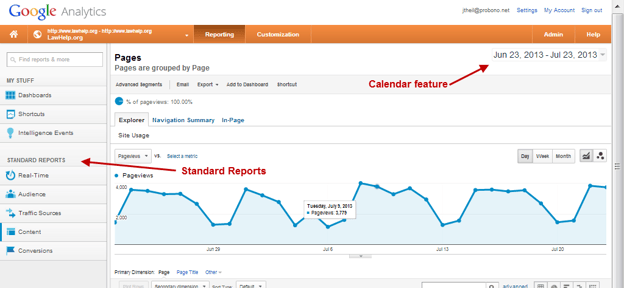
ii). Click on the “Admin” button in the top right
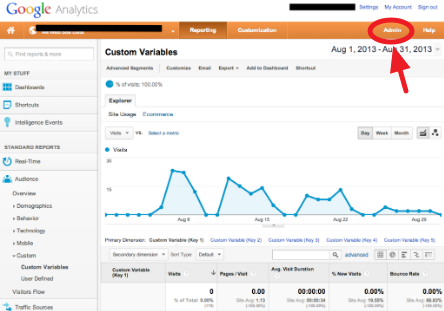
c). Click “Goals”.
Next, Click “+ Goal” from one of the Goal sets to set up a new goal.
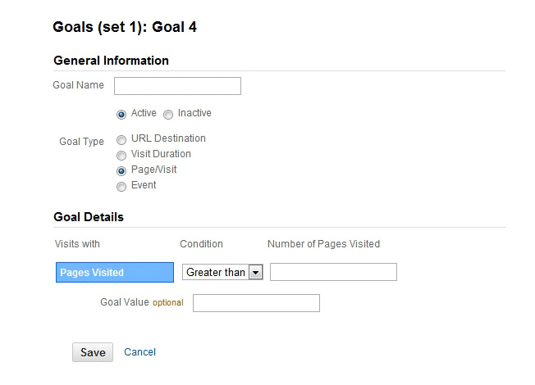
Make sure you name your goal first. Make it clear and easy to be instantly remembered.
With the “active” or “inactive” options, you can toggle to determine whether a goal is functioning or not. You can turn a goal off by choosing “inactive.”
Step #3. User Experience (UX) Audits
Customers are transforming how businesses are being carried out on the web. This is a serious shift. Every business must swim with the tide and not fight it.
In the past, organizations made all the rules. Today, customers drive and influence these rules. After all, they’re the ones spending the money.
From the traditional firm structures to the porous organizations, tracking consumer behaviors across different channels, devices, demographics, and so on, has become more important than ever.
Former Senior Vice President of Pricing and Promotions at Staples, Donna Rosenberg reflects on this change over time:
When I first started in retail, we only had stores and that transaction data and then we added our online business. You are suddenly getting more data and have more access to customers. And then mobile came along and customers are engaging with you at a variety of different access points. Things evolve through people wanting to engage with you more and more. It’s a give and take situation and it’s accelerating.”
User experience (UX) encompasses the total experience that your website delivers for the users.
This goes beyond mere design and includes how easy and intuitive your site is to use, the speed of your site and its pages, how users feel when navigating your pages, and how much friction is encountered.
Here’s another definition from Nielsen Norman Group:

Although a website may look colorful and charming, if users feel it loads too slow (more than 3 seconds), or the information you shared is low-quality or confusing, then your site’s user experience is bad.
The User Experience Honeycomb as illustrated by Peter Morville clearly describes the most important elements of good user experience:

Let’s consider each element briefly:
-
Useful: What specific goal does your website help users to achieve? Is your website useful? If you’re able to deliver more value in your website, the better the user experience.
-
Usable: Make your website easy to navigate. Users should be able to move from one page to another page. If it feels confusing or difficult, the user experience is bad.
-
Desirable: Yes, the design matters too. Make sure it’s attractive and efficient. Use the right images, brand identity, and emotional design elements to up your website design. Users will thank you for it.
-
Findable: Make your website easy to find on the web. Also, users shouldn’t have difficulty looking for specific pages (e.g., services page). If they struggle to find the pages or have to use the search box, you’ve probably lost a visitor.
-
Accessible: Make your website accessible to everyone, irrespective of their class or demographics — especially when your target audience is diverse — comprising of diverse people.
-
Credible: Don’t even think of converting a visitor to a buyer when your expertise is questionable. People have to believe in your credibility first before they can buy from you.
-
Valuable: Your website must help users improve their lives and businesses or specific endeavors, else, they’ll move on to your competitors.
Use the User Experience Honeycomb to guide your testing when conducting a CRO audit, with respect to user satisfaction on your website.
More importantly, According to a report titled “From UX to CX: Rethinking the Digital User Experience as a Collaborative Exchange,” which was released by Capgemini Consulting, here’s how you can utterly improve user experience on your website:
You can make your customers happier by giving them the choice to do part of the work.”
Vincent Boon, Head of Community describes the power of the participation market at giffgaff, “The value generated by the community is incredible, and means we can take the savings we make from not having a traditional, high-cost infrastructure, and pass that directly to our customers in terms of great product value. Everyone wins!”
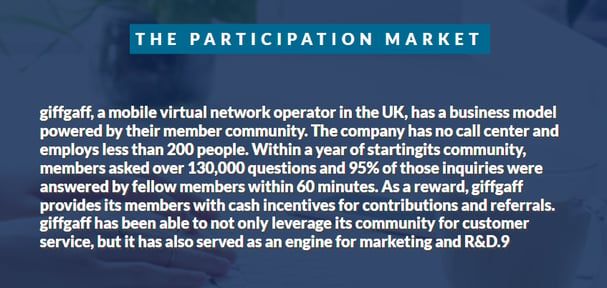
Step #4. Website Analytics Audit
You need to get your website analytics in check. If you don’t want your CRO results to be adulterated, you’d have wasted months gathering inaccurate data, which aren’t useful on the long-run.
That’s the essence of analytics.
The primary reason why you should run your analytics through an audit is to ensure accurate results and save time in the foreseeable future when you’re ready to use the data.
You can get started by conducting a Google analytics health check. This health check will answer the following questions:
- What amount of data are you collecting?
- Are you collecting credible data?
- Do you see technical difficulties that need to be addressed?
You’ll also understand the totality of your Google Analytics account so that you can solve the common analytics issues.
Let’s consider a few of them:
i). Incorrect filter settings: This analytics issue will definitely impact negatively on your data. It may result in a situation whereby you have to inadvertently filter all of your data from your reports. Often times, this issue happens as a result of users applying multiple “Include” filters.
ii). Setting up multiple instances of the Classic Analytics tracking snippets: This issue happens mostly because The Classic Analytics JavaScript library doesn’t yet support the tracking instances. If you’re using multiple tracking code snippets on your website and its pages, you should endeavor to use a supported configuration.
iii). Using incorrect snippet and/or viewing the wrong account or view: If you’re tracking multiple websites and/or uses multiple Analytics accounts, it’s possible you might be mistakenly using the snippet from another account and/or view.
What you need to be certain about is that you’re using and viewing the correct account and view.
Remember that bad and inaccurate data from your Google Analytics can ruin your CRO audit. So make sure you:
-
Create a good Google Analytics health checklist or use this one to review and improve your set up.
-
Go through your Google Analytics Account >> Property >> View settings, and address the questions listed in your checklist. Ideally, begin from the topmost issues and work your way down.
-
Review new issues which always pop up. Always review your checklist at least once a year.
Step #5. Tracking Audit with Focus on Actionable Metrics
This CRO audit phase is critically especially for businesses that are running PPC ads. When it comes to metrics you should track as your KPIs, there are basically two types:
-
Actionable metrics
-
Vanity metrics
As the name implies, vanity metrics are easy to inflate and improve. As good as it may sound, these metrics are ‘vanity’ and don’t add to the bottom line. They can be a form of distraction to PPC marketers.
These vanity metrics don’t “actually” increase the value of your landing pages or campaign. If you chase these metrics, you might end up losing more money instead of making more.
A good example of a vanity metric is traffic volume in Google Ads. There are beginners who think that the easiest way to increase lead volume is to get clicks to their ad and traffic to their landing pages. They assume that the more traffic, the more conversions, after all.
That couldn’t be further from the truth.
Smart PPC marketers aim to maximize every click and traffic. If they have to get more traffic, it’s for the sole purpose to exponentially increasing conversions — and not to fix the current conversion issue.
The truth is that if your conversion rates aren’t increasing with your clicks, you’re going to be broke and burn your budget. Don’t let that happen to you.
Ideally, focus on actionable metrics. These metrics include free trial signups, email subscribers, shopping cart abandoners, demo users, etc.
At the end of the day, there’s a chance that people who signed up to try your product will eventually upgrade to a paid plan, the same thing applies to email subscribers, demo users, shopping cart abandoners (especially when you follow up or retarget them).
Step #6. Website Design and Layout (both Desktop and Mobile)
Having a custom website that looks beautiful is important. But that’s just the beginning. If ‘that’ good-looking website isn’t converting users (i.e., visitors) into customers, you know there’s a problem.
The conversion rate of any website is more important than its aesthetics. Most of the time, the end user doesn’t care about your choice of colors and design. What they care about is how much value they derive from using your website. Bear that in mind!
That’s why Conversion optimization professionals focus on the elements below to make it pretty easier for the target audience to visually scan and use the website, including:
i). Allowing plenty of white space or blank space on the website. A good example of a B2B website that uses white space especially on its homepage is Keap (formerly Infusionsoft).
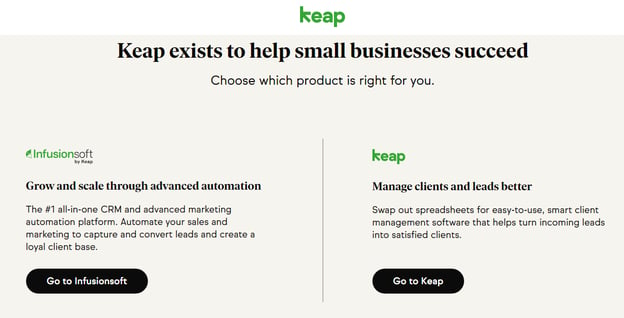
Note: The term “white space” doesn’t necessarily mean WHITE empty space. It could be any color (blue, red, orange). The most important thing is for that background to be blank with no text or image.
Here’s another website (Hellobar) with lots of white space (in orange).
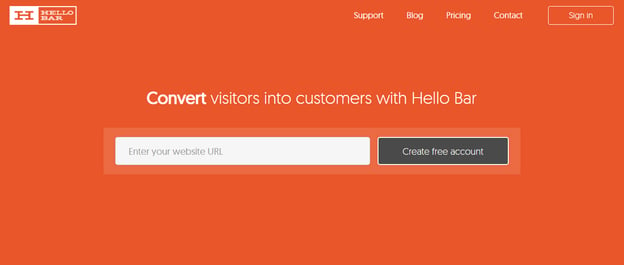
ii). A single, clear, and relevant call-to-action button. The purpose of your landing page is to persuade the user to take a ‘definite’ action. So there’s no need including multiple call-to-action buttons that lead to different pages or products. That’s insane!
Whether it’s mobile or desktop usage, a single and clear CTA button will be just fine.
At Clickx, we use a single catchy CTA button:
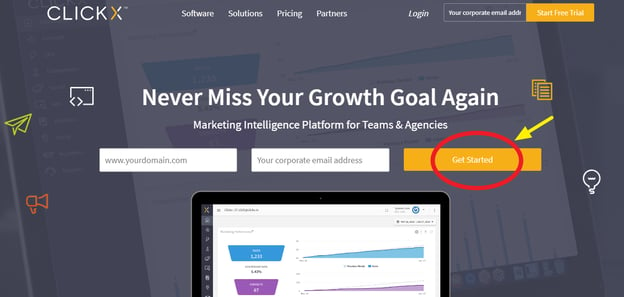
iii). Legible typography and fonts. Make sure you use easy to read fonts on your pages. This is particularly important for mobile users who scroll with their fingers; the mobile display screens are also smaller than the desktop.
So use clear and modern typography and fonts.
HelpScout Is a B2B company that I admire. Their website is beautiful and they take extra care in their choice of fonts. Take a look:
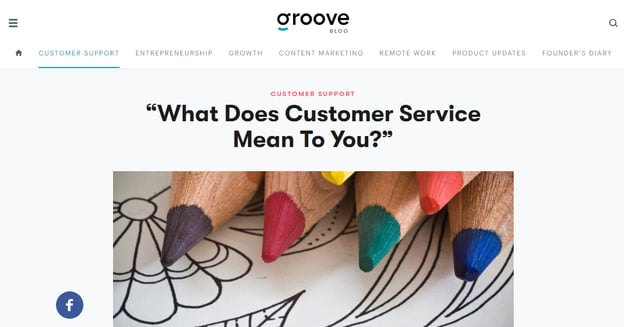
iv). Consistent and proper division of main and sub-sections. You also want to make sure your website has consistent navigation across the main and subsections.
A good example is SEJ:

So far, we’ve dealt with common conversion practices that will work well for desktop users. We must also make sure the site performs well on mobile devices. Why?
Because mobile traffic currently accounts for ⅓ of all web traffic which is approaching the 50% mark. If your website isn’t mobile-friendly and responsive at the same time, you’re doing your business a disservice. Worse, you’re also leaving a lot of money on the table.
A mobile responsive website and layout will ensure that irrespective of the device or screen size, your website will naturally adjust to serve the user. Here’s an illustration:
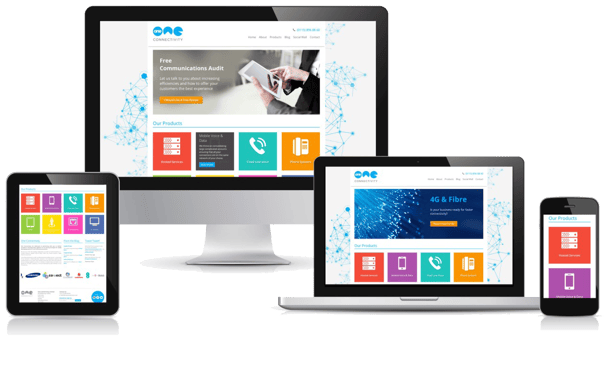
If you’re thinking of designing a separate mobile website version for your mobile audience, there’s no need for that.
You can use HTML5 and CSS3 to craft a responsive website that conforms to all screen resolutions, devices. Just ensure it loads fast on smartphones.
If you’re a WordPress user, for example, then you can use WordPress themes from popular marketplaces such as Themeforest or MyThemeShop. Most of their themes are mobile-responsive.
Better yet, if you want a custom website that’s responsive, you can contact the OneIMS web design team here to help you.
Step #7: Search Engine and Social Media CRO Audit
It’s always a good idea to group search engine and social media optimization together since they’re the primary channels you generate traffic from, according to the Internet and Telecom Traffic Share:
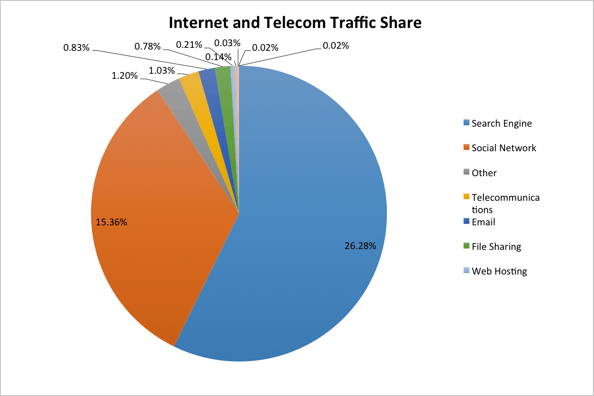
Even though the conversion rate from search engine visitors is higher than social media, the key focus is the ‘channel.’
With so many factors affecting the conversion rates of a website, we’ll make it a lot easier if we understand the channels. Then we can invest more time and resources to study the user behaviors from those channels.
As a B2B marketer, I’m sure your organization has a set budget for SEO (search engine optimization) and other marketing strategies. Social media, I’m not sure how many businesses invest in it as much as they do in SEO.
And it’s understandable. The quality of traffic and leads from social media can’t be compared to search engine across different industries. Not by a long shot. It’s not as valuable. Why?
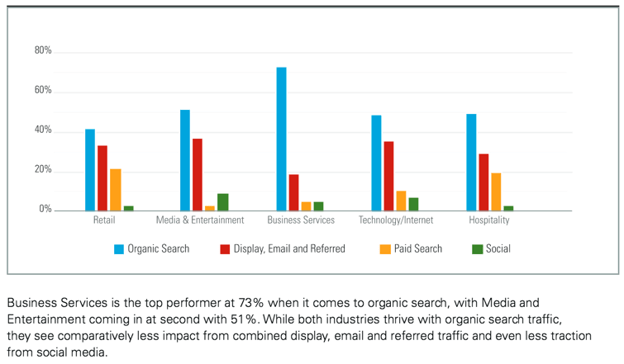
Because people don’t go to Instagram, Facebook, or Twitter to buy a product or enroll or sign up to a newsletter. They signed up on these social media channels to connect with old friends, meet new friends, and share thoughts and ideas together.
However, don’t be dismissive of social media traffic. Even if the commercial intent is low, don’t neglect it completely.
Another reason why we’re looking at the search engine and social media traffic side by side is because there’s a correlation.
Yes, we agree that social traffic isn’t a Google ranking factor but social signals impact other factors that Google considers when deciding where a particular page should rank.
In other words, “there is an indirect relationship between social media and SEO. Essentially, content that generates a lot of shares, likes, and comments on social media will likely earn more trusted backlinks, which helps boost search rank.”
To get the best out of your social media efforts and improve conversions, you might want to:
-
Use the same tone and style on your website for your Facebook, Twitter, and LinkedIn profiles.
-
Encourage people to engage with your content on social media (ask them to share it).
-
Include primary branding elements and graphics from your website on your social properties.
-
Ignite a conversation on your social channels as you do on your blog.
-
Make it easier for customers on Facebook and other social networks to interact with your brand. How? Create and embed surveys, contests, and quizzes. These interactive elements will encourage interaction.
A good example of a brand that does this well is Starbucks. The company not only responds to customer complaints, but also provides a consistent voice, tone, and engagement level for all its customers and fans.

Starbucks is smart. Here’s what the company did to encourage interaction across social media channels.
The social media team have an open policy that allows users to participate by submitting their own photos. Users are also allowed to vote on a contest for the best artistic cup design through Pinterest.
Trust me, this is the exact type of cross-channel communication that motivates people to share, recommend, discuss, and feel a part of the community that’s making a positive impact.
Conclusion
There you’ve it, the ultimate guide to performing your CRO audit step by step.
Don’t forget to stay true to the goals you set before setting running your website through a CRO audit. Remember that when it comes to conversion rate optimization (CRO), your objective is to provide value and deliver a great user experience for humans on your landing page.
Often times, we forget this fact and assume we need more ‘traffic’. Both Google, Yahoo!, Facebook, Quora, and other lead generation channels want you to bear one thing in mind:
Their users are real human beings with blood running through their veins. They aren’t computer robots who can be manipulated.
So whether you’re running a split test on your PPC ads, or creating content for your blog, provide enormous value.
As you follow the guidelines on this page, make sure you stay focused on prioritizing the changes that will grow your leads, customers, and revenue, with the least efforts.
The little changes you make on your website or landing page will grow your ROI the fastest.
Don’t underestimate it!
If you have questions regarding Conversion Rate Optimization, and specifically how to squeeze more money out of your existing traffic while providing more value, we’re here to help and support you. Request to speak with a CRO Strategist today.

